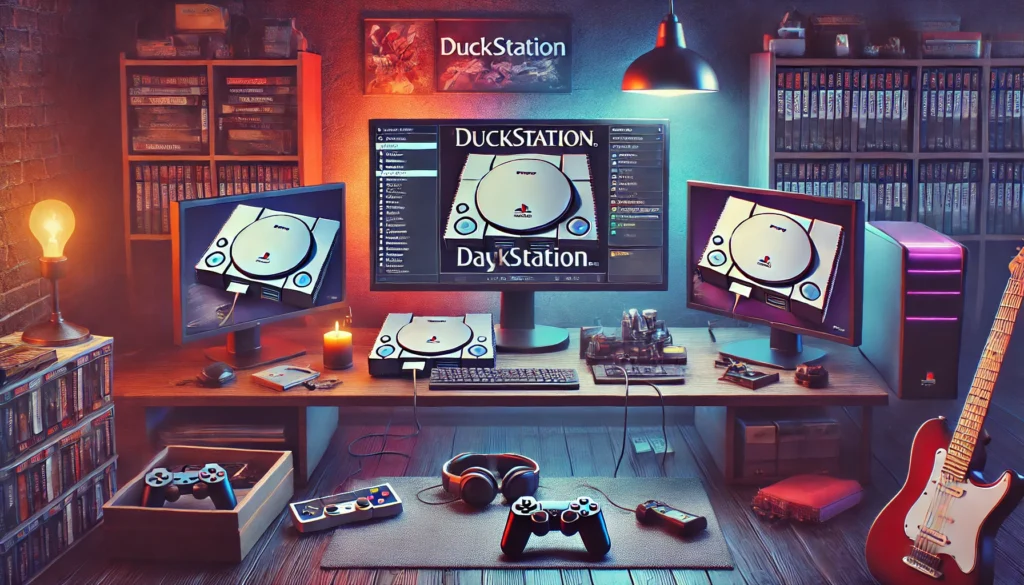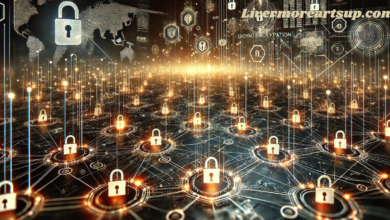Mastering DuckStation Bios A Complete Guide to BIOS Setup and Optimization

Introduction
The evolution of video duckstation bios emulation has allowed enthusiasts to revisit beloved classics on contemporary systems, introducing a whole new generation to games once confined to outdated consoles. duckstation bios, a notable emulator explicitly designed for PlayStation games, offers an enriched gaming experience through its sophisticated emulation capabilities. The duckstation bios (Basic Input/Output System) is central to this technological marvel, which is critical for the functionality and enhancement of the gaming experience. This guide aims to explore the intricate details of BIOS within duckstation bios, illustrating its vital importance and the process for legal acquisition, installation, and optimization, ensuring gamers achieve the most optimal setup for their emulation journey.
Understanding DuckStation BIOS
In the context of emulation, BIOS stands for the proprietary system firmware originally used in physical consoles. In PlayStation emulators like DuckStation, the BIOS files are indispensable, serving as the foundational software for the emulator to boot and run the games accurately. These files facilitate the essential machine language that enables interaction between the game software and the console’s physical hardware capabilities, such as memory management and controller inputs. This interaction is crucial as it dictates the emulator’s ability to mimic the PlayStation’s operational logic, directly impacting game compatibility, performance, and the overall user experience.
The Role of BIOS in DuckStation
Integrating the correct BIOS files into DuckStation is essential for accurately replicating the PlayStation gaming environment. This accuracy is crucial for game compatibility and enhances the emulator’s ability to deliver a smooth, glitch-free gaming experience. The proper DuckStation BIOS configurations can leverage higher performance potentials, enabling enhancements in graphics and audio outputs that surpass the original PlayStation’s capabilities, thereby elevating the overall quality of gameplay. For the avid gamer, this means enjoying their old favorites with improved resolutions and smoother frame rates, offering a modern twist to classic games.
Acquiring and Installing DuckStation BIOS
It is paramount to address the legality of BIOS acquisition before attempting to download or use BIOS files. Legally, BIOS files should only be obtained legitimately, typically extracting them from a console you lawfully own. This ensures that the emulation remains within ethical boundaries and respects the intellectual property rights of the original hardware manufacturers. Adhering to these legal guidelines supports the gaming industry and protects the user from potential legal consequences.
Step-by-Step Guide to Installing DuckStation BIOS

To install DuckStation BIOS, users must first legally obtain the necessary files through extraction, usually from their own PlayStation console. Once these files are secured, they should be placed in a specific directory designated by DuckStation. The installation involves navigating to the emulator’s settings, selecting the ‘BIOS’ section, and directing DuckStation to the folder where the files are stored. Proper installation and configuration are critical, as they ensure that the emulator recognizes and utilizes the BIOS correctly, essential for the optimal performance of different region-specific games.
Configuring DuckStation for Optimal Performance
First-time configuration of DuckStation requires adjusting several settings to align with the user’s system specifications and personal preferences. This setup includes configuring graphical settings to enhance resolution, adjusting audio settings for better sound quality, and customizing controller settings for improved gameplay interaction. Users should ensure their hardware meets the emulator’s recommended specifications, such as having an up-to-date CPU and GPU capable of handling the increased demands of enhanced game textures and resolutions.
Advanced DuckStation BIOS Settings
Advanced users may delve into more complex BIOS configurations to refine their gaming experience. This involves tweaking memory card settings, adjusting CD-ROM speeds, and applying specific patches to improve game load times and overall performance. Experimentation with these settings can significantly enhance the gameplay experience, allowing users to tailor the emulator to their preferences and balance visual fidelity and system performance.
Conclusion
Mastering DuckStation BIOS setup and optimization is crucial for anyone serious about PlayStation emulation. Proper understanding and configuration of BIOS ensure that games run efficiently and significantly enhance the overall quality of the gaming experience. By following this comprehensive guide, users can effectively navigate the complexities of BIOS integration, leading to a more enjoyable and authentic emulation experience.
FAQs
Q: Can I use a single BIOS file for all PlayStation games in DuckStation?
A: While one BIOS file can sometimes suffice, some games, especially those with region-specific features or locking, may require specific BIOS files related to their regional versions to function correctly.
Q: What are the common symptoms of incorrect BIOS configuration in DuckStation?
A: Incorrect BIOS configuration can lead to several issues, including games not booting up, frequent crashes, or graphical and audio glitches.
Q: How often should I update my BIOS files for optimal emulator performance?
A: BIOS files do not need to be updated frequently. However, keeping them up-to-date with the latest versions recommended by DuckStation can help maintain optimal performance and compatibility.
Q: Are there any risks in downloading BIOS files from unofficial sources?
A: Yes, obtaining BIOS files from unofficial sources can pose significant risks, including legal repercussions and potential exposure to malware, jeopardizing your system’s security and functionality.
Q: Are there any risks involved in downloading BIOS files from unofficial sources?
A: Yes, obtaining BIOS files from unofficial sources can pose significant risks, including legal repercussions and potential exposure to malware, which can jeopardize both your system’s security and functionality.




